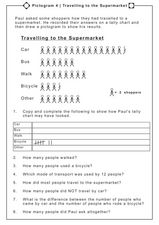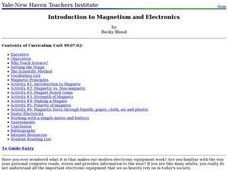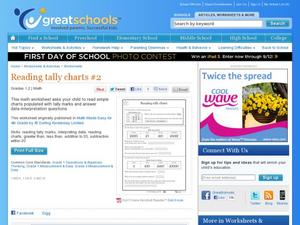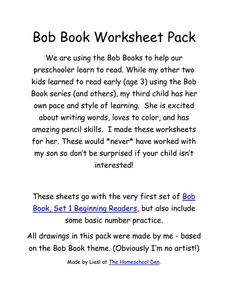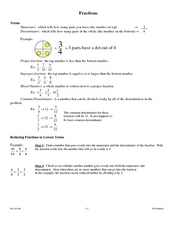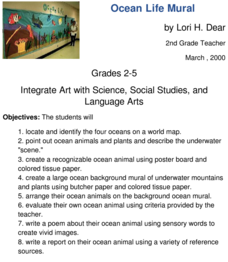Fuel the Brain
Number Correspondence
Your kindergarteners have learned how to count to 10 already, but this worksheet tests their number correspondence. With provided pictures of a house and a tree, your class is given a specific number of windows and leaves to add on.
Curated OER
Late-In-The-Year Counting
Students practice forward and backward counting. In this counting lesson, students calculate how many objects in a bag by counting forward and then count backward to check.
Curated OER
Same Number
In this recognizing same numbers worksheet, students count objects and draw lines to match the groups with the same number of items. Students match three groups.
Curated OER
Pictogram 4: Traveling to the Supermarket
In this creating and comprehending a tally chart worksheet, students use a pictograph to tally the number of ways people traveled to the supermarket, tally the results, and answer comprehensive questions. Students answer 8 questions.
Curated OER
Introduction to Magnetism and Electronics
Learners are introduced to the concepts of magnetism and electronics. As a class, they walk through the steps of the scientific method and define new vocabulary. In groups, they are given a bag of objects and they are to separate them...
Curated OER
Money
For this money worksheet, 3rd graders count coins. Students respond to 7 questions writing the amount of money that is depicted in each picture.
Curated OER
Counting From 1-10: The number 1
In this counting worksheet, students get familiar with the number 1, counting objects and writing how many they see; all objects are seen only once.
Curated OER
Making Ten
Provide learners with both the questions and the answers at the same time. They will consider each problem and then read how to solve it. There are two problems in which they are required to make 10 by completing the steps found in each...
Curated OER
The Rest of the 7s
Help your fourth graders master the 7 times table. They complete number sequences and solve multiplication problems in numerical and written formats. Once they finish this activity, they'll be ready to take on 8s and 9s!
Curated OER
Reading Tally Charts #2
Keep count with tally marks! First graders practice reading tally marks with this straightforward learning exercise. They work with interpreting data from a chart, as well as working with addition and subtraction under 20. A great math...
Homeschool Den
Bob Book Worksheet Pack
Practice fundamental reading and number skills with a packet of worksheets for early readers. Pupils find sight words, trace letters, and complete number sequences.
National Park Service
Hibernation-Migration-Fascination
What's the difference between hibernation and a good nap? Find out with an engaging life science activity that compares the hibernation habits of grizzly bears and marmots. After learners read an informational passage about each mammal,...
Curated OER
Fractions Forever!
Middle schoolers identify proper, improper fractions, and mixed numbers. They reduce fractions to their lowest terms. They add and subtract fractions with different denominators, and multiply and divide fractions, as well as...
Curated OER
Missing Addends
Where are all the addends? Addition novices solve 36 equations by filling in the single-digit addend to achieve the given sum. They reference several examples, each of which include object sets to help learners visualize the...
Curated OER
Clean up the Money!
In this money instructional activity, students fill up a grid with coins and then roll dice to get ordered pairs and take the money of the ordered pair that they roll. Students then add up their money in the end and see who wins.
Curated OER
Working with Coins
Count the correct change with a money math worksheet! Given certain coins, second and third graders add and subtract amounts of money to find the correct change. The worksheet uses pennies, nickels, dimes, quarters, half dollars, and...
Florida Center for Reading Research
Phonological Awareness: Sentence Segmentation, Nursery Rhymes
What makes a complete sentence? Words, of course! As your budding readers understand this relationship, guide them through this nursery rhyme activity. Scholars examine pictures of 10 familiar rhymes, mentally counting the words in the...
EngageNY
Replacing Letters with Numbers
When did letters become the same as numbers? Scholars learn about substituting numbers for letters to evaluate algebraic expressions in the seventh part in a series of 36. The lesson focuses on expressions related to geometry, such as...
CCSS Math Activities
Smarter Balanced Sample Items: 7th Grade Math – Claim 2
To solve or not to solve that is the problem. A slide presentation of 17 items show different ways that Smarter Balanced assesses Claim 2, problem solving. The items span from sixth and seventh grade concepts to highlight the...
Curated OER
Ocean Life Mural
How many oceans can you name? First, have learners try to name as many oceans as they can, and then have them locate and identify the oceans on a world map. They create a recognizable ocean animal using poster board and tissue paper....
Maths Blog
Make 20
There are quite a few ways to make the number 20 through addition. Learners fill in missing addends to reach the sum of 20 then answer additional related questions. This is a good resource because it has the class both add to 20 and...
Math Worksheets Land
Multistep Ratio and Percent Word Problems - Step-by-Step Lesson
What happens when you have a recipe and need to up the measurements? Here is a lesson that explains how to use ratios to convert measurements and percents with worked out problems. Also provided are additional resources and practice...
Houghton Mifflin Harcourt
Area - Homework 18.3
Presenting perfect practice for finding perimeter and area of a rectangle. Three rectangles are depicted, three sets of sides are listed, and one real-life application described for which youngsters compute both values. The...
Curated OER
Ordinal Numbers
Introduce ordinal numbers with this simple teaching tool. Young mathematicians trace numbers from 1 to 5. Then they circle the object in a row of 5 that represents the numerical place of the number they just traced. Example: Students...



